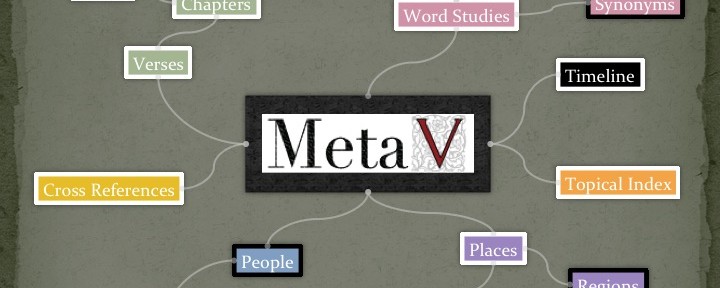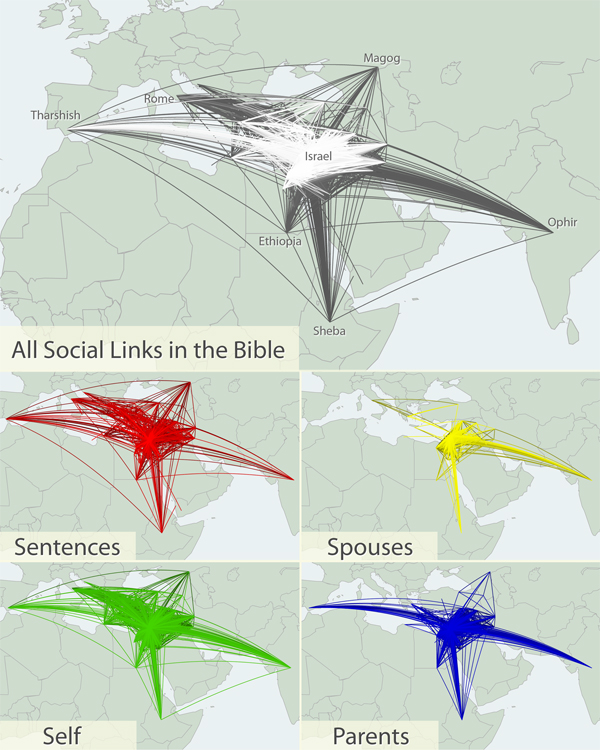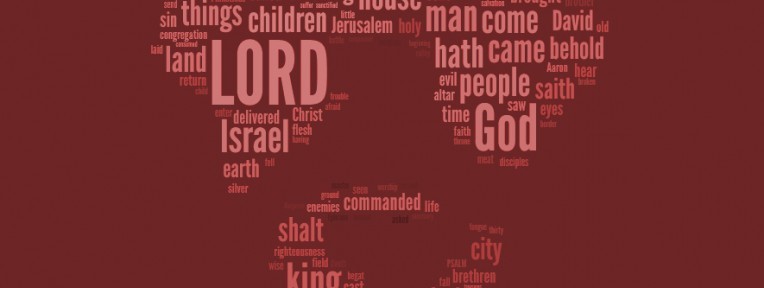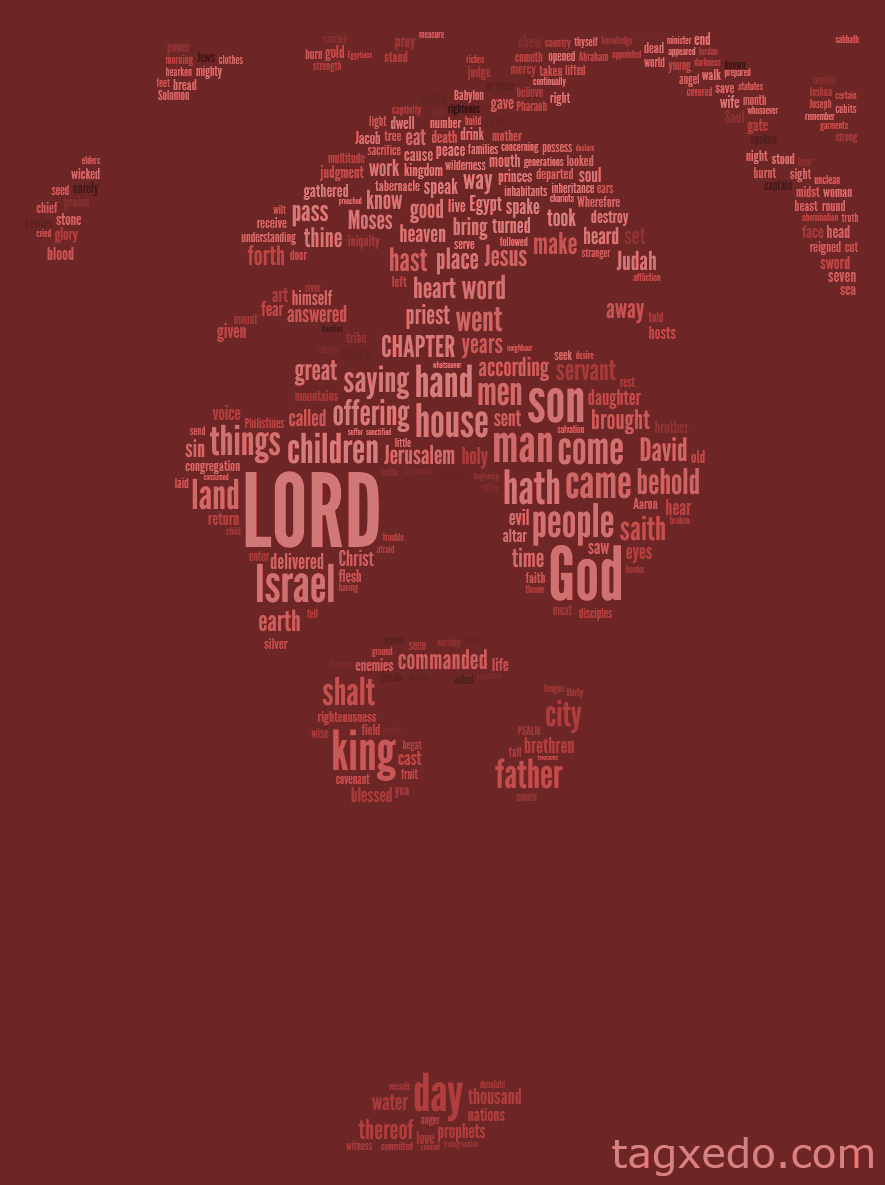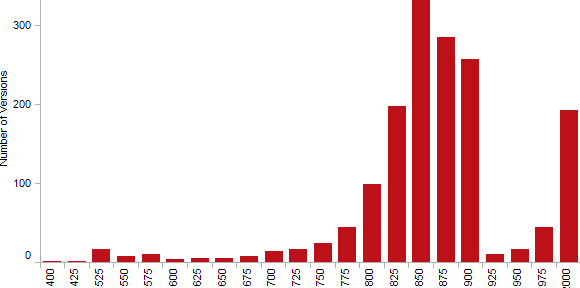What is MetaV?
MetaV is the name given to the underlying database used to build the visual Bible explorer on this website and several other infographics. It links together details on people, places, periods of time, and passages in the Bible at word-level detail. This database is specially structured to simplify complex “big picture” analysis or visualizing biblical information.
What’s new in the current version?
You can track version history here or fork the GitHub repository.
Can I trust this information?
Above all, the Bible represents absolute truth given from God. The electronic source text of the Bible has been checked for accuracy against multiple other electronic sources of the King James Version using modern text comparison software. The rest of the information in MetaV is nothing more than well-studied conclusions about the Bible formulated and trusted by faithful Christians over the centuries. For more details on original sources, reference the database documentation available in the readme file (included in the downloads below).
How should I navigate the data?
This database is structured so that anyone familiar with spreadsheet applications such as Microsoft Excel can make good use of the information in a variety of ways. Those who have experience with data manipulation and queries will find it simple to perform more advanced analysis. The readme file and schema diagram included in these downloads give an overview of the tables and fields as well as how they are related to each other.
Can I share it with others?
Please do! Our goal is to get the Bible and helpful related information into the hands of as many people as possible. MetaV was built using data obtained from those who have generously shared it with others. In that same spirit, MetaV is free to use and copy under a Creative Commons Attribution Share-Alike license. All we ask is that you let us know where and how the data will be used. Please see the details on individual source files (available at the links below) for more specific usage guidelines.
Click below to download all files.
You can also fork the GitHub repository or, choose individual files from the table below.
| File Name | Size | Description |
|---|---|---|
| Readme.txt | 8 KB | Complete source and licensing details and field names for all tables. |
| Schema Diagram.pdf | 30 KB | Visual Layout of the relationships between the tables listed below. |
| BookAliases.csv | 4 KB | Correlates all known book titles and abbreviations to a specific book ID |
| Books.csv | 1 KB | Standardizes all Bible book names with a given numerical ID |
| CrossRefIndex.csv | 6.4 MB | Compilation of cross references obtained from R.A. Torrey’s Treasury of Scripture Knowledge (Public Domain). Duplicate cross-references have been excluded. |
| MainIndex.csv | 70.9 MB | The main index associating the various tables in this database with individual words. Text used: 1769 Cambridge Edition of the King James Version, also known as the Authorized Version (Public Domain). Tags with references to deity are provided with permission from Bible Analyzer’s AVp module. |
| People.csv | 96 KB | Listing of all people in the Bible and key facts about them. this is a mashup of data found at complete-bible-genealogy.com and www.marshallgenealogy.org/bible. Name spelling has been updated to match the source bible text. |
| PeopleAliases.csv | 61 KB | All known aliases by which a person is referred to in the KJV. |
| PeopleGroups.csv | 21 KB | Groups to which individuals in the People table belong. |
| PeopleRelationships.csv | 223 KB | All known relationships between people listed in the KJV. Note: “Father” may refer to a more distant ancestor. |
| PlaceAliases.csv | 26 KB | All names by which a particular place is referred to in the KJV. |
| Places.csv | 70 KB | All identifiable places mentioned in the bible. Locations may be approximate. Source: openbible.info/geo (Creative Commons Attribution License). Place references in time periods prior to Noah’s Flood have been removed. |
| Strongs.csv | 2.6 MB | Strong’s Concordance in Hebrew and Greek. Source: openscriptures.org (https://github.com/openscriptures/strongs) License: Creative Commons Attribution-ShareAlike 3.0 |
| StrongsIndex.csv | 6.2 MB | Correlates Stong’s Number(s) with individual words in the KJV. |
| Topics.csv | 1.6 MB | Mashup of Nave’s Topical Bible and Torrey’s New Topical Textbook. Public Domain. |
| TopicIndex.csv | 1.5 MB | Correlates topics with each verse in the KJV. |
| Verses.csv | 4.9 MB | Full text of each verse in the King James Version of the Holy Bible. |
| Writers.csv | 1 KB | Lists authors of each book of the Bible. Where one book may have had more than one writer, the primary author’s name is used. |
